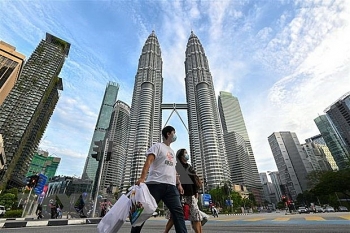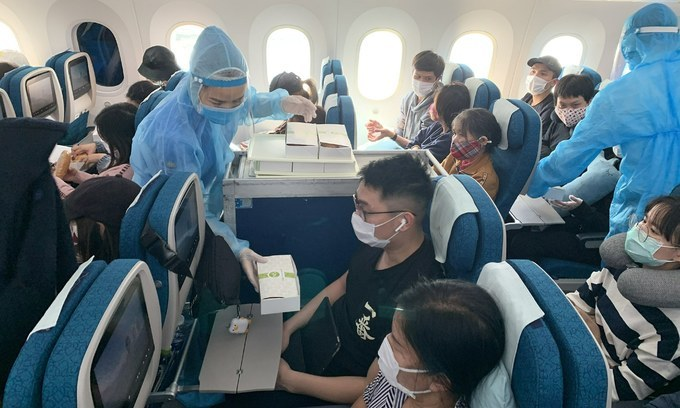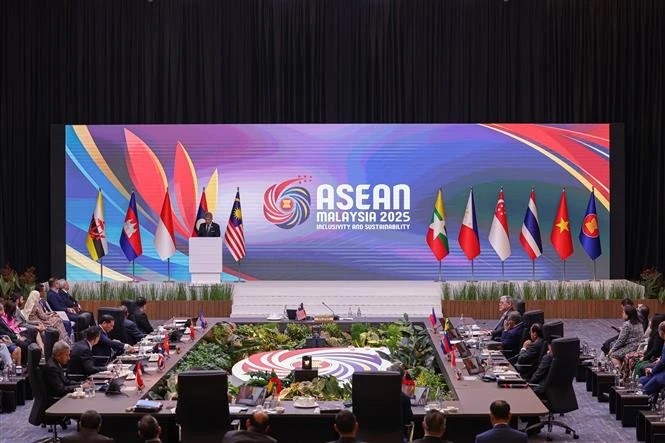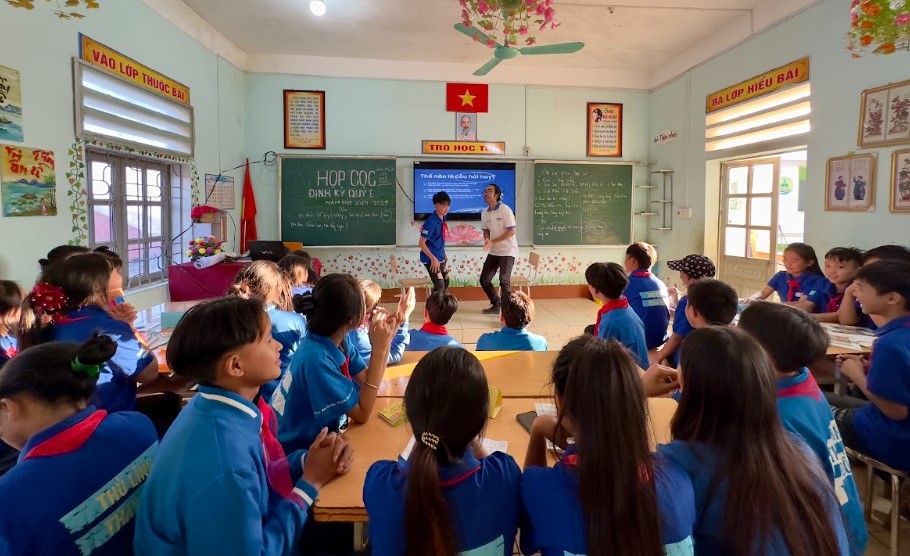CAAV: Airport staff to be regularly tested for SARS-CoV-2
Aviation staff in direct contact with passengers will have to wear transparent face shields and will be frequently tested for SARS-CoV-2 as part of the efforts to stop infections after two clusters in two major international airports were detected in Vietnam's latest community infection wave.
The Civil Aviation Authority of Vietnam (CAAV) has issued an emergency document demanding strengthened measures in COVID-19 prevention and control at airports across the country.
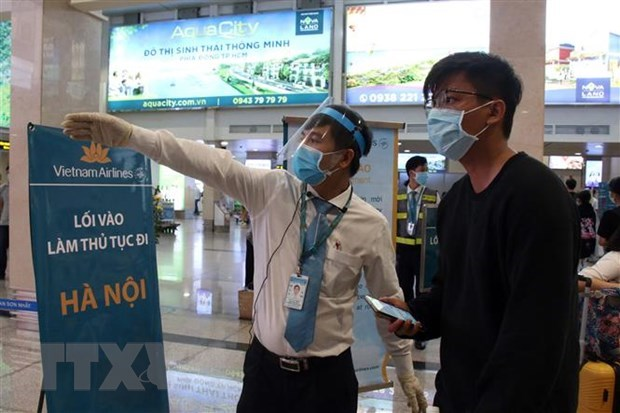 |
| A ground service employee at HCM City's Tan Son Nhat International Airport directs a passenger to the check-in area Photo: VNA |
CAAV Director Dinh Viet Thang asked all aviation staff to strictly follow preventive and control measures including the use of face coverings, frequent disinfection, avoiding large gatherings, keeping a safe distance and submitting health declarations.
Airline passengers are required to submit e-health declarations at tokhaiyte.vn or via the app Vietnam Health Declaration, according to Vietnamplus.
Those who failed to file proper health declarations or observe disease prevention and control measures would be refused to board.
Thang also asked all aviation staff to install and activate the contact tracing app Bluezone which helps detect and deliver early warnings about COVID-19 cases and potential risks of coming into contacts with suspect cases.
 |
| Passengers at Tan Son Nhat Airport, HCMC, on January 5, 2021. Photo by VnExpress/Quynh Tran. |
Passengers would be instructed to keep a safe distance when checking-in or on buses traveling from terminals to planes and vice versa.
Airport authorities and airline operators nationwide were asked to review and assess disease prevention and control activities to detect risks of infection.
From February 15, Vietnam Airlines added preventive measures on flights from Hà Nội as the number of passengers from Hà Nội to southern provinces increased sharply after the Tet (Lunar New Year) holiday.
Passengers on flights from Hanoi, Quang Ninh and Hai Phong would be randomly tested for SARS-CoV-2 when arriving at Ho Chi Minh City’s Tan Son Nhat Airport.
Packaged meals would be served in order to limit contact between flight attendants and passengers.
The flag carrier Vietnam Airlines would also disinfect all planes that depart from Hanoi to Da Nang or HCM City as soon as they land. Other planes would be disinfected when they return to Hanoi, Da Nang and HCM City.
Among 22 airports in Vietnam, Van Don Airport in northern Quang Ninh province has been closed since January 28 after a group of employees including security personnel were found to be infected with the coronavirus. The airport is set to reopen on February 21 after all 160 staff working at the airport were confirmed negative for SARS-CoV-2 on February 9.
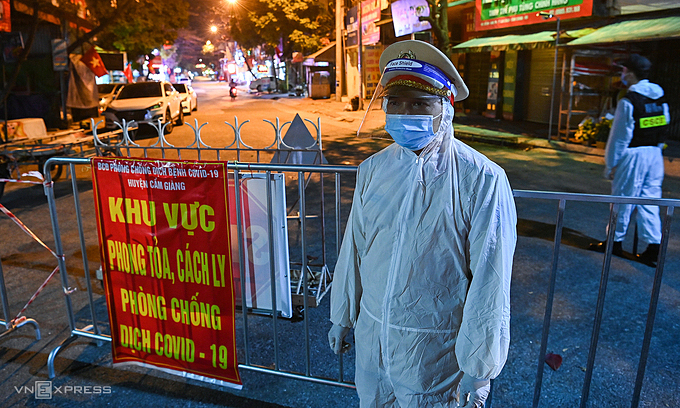 |
| A medical staff stands guard at a Covid-19 checkpoint in Cam Giang District, Hai Duong Province, February 15 2021. Photo by VnExpress/Giang Huy. |
After confirmed COVID-19 cases at the Van Don Airport, the Airport Corporation of Vietnam (ACV) on February 4 announced that employees of all 21 active airports would be tested for COVID-19.
On February 6, a luggage handler at the Tan Son Nhat International Airport was found to be positive for SARS-CoV-2.
As of February 13, an additional eight staff members of the airport tested positive for the novel coronavirus, all of whom are ground service staff and baggage handlers under Vietnam Airport Ground Services Company Limited (VIAGS).
Due to the impacts of the new wave that appeared just a couple of weeks before Tet, the country’s biggest holiday, Vietnamese airports only received 815,000 passengers during the Lunar New Year holiday, down 66 percent year-on-year.
| The country has been struggling with a new outbreak wave since Jan. 28 after 55 clean days in a row, with 776 community transmissions recorded in 13 localities, including Hanoi and HCMC. With 596 cases, Hai Duong is now the biggest Covid-19 hotspot, followed by Quang Ninh (60) and HCMC (36). The national tally has gone up to 2,368 to date, with 35 deaths. Around 125,000 are in quarantine nationwide, either in hospitals, quarantine zones or at home. At least 14 localities across the country have allowed students to return to school next Monday as the situations at hotspots like Hanoi, HCMC and Quang Ninh have basically been put under control. Major cities such as Hanoi and HCMC continued letting their students stay home until the end of this month. The entire Hai Duong Province, the country’s biggest Covid-19 hotspot, entered 15-day social distancing starting Tuesday to stem the spread of the virus, with authorities requesting residents to stay home and only go out to buy necessities like food and medicine or for emergency. Hai Duong also began installing surveillance cameras on major streets in some high-risk areas to assist police forces in inspecting residents' compliance with pandemic prevention measures. After Chi Linh Town, Hai Duong Town, capital of the province, restricted the number of shoppers allowed to attend wet markets from Saturday to limit residents going out unnecessarily. |
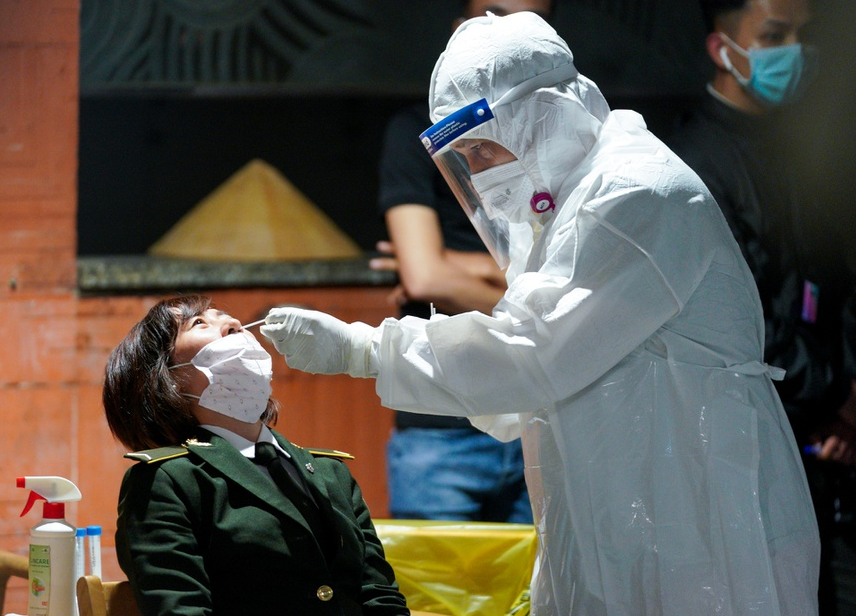 | Vietnam COVID-19 Updates (Feb 20): No new cases, provinces urged in fight against COVID-19 Minister of Health Nguyen Thanh Long has called on localities to identify scenarios to cope with the COVID-19 pandemic. |
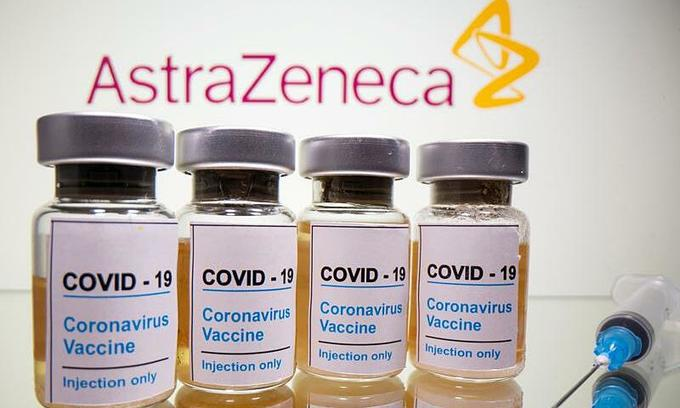 | Vietnam to receive 60 million Covid-19 vaccine doses in 2021 Vietnam is expected to receive 60 million Covid-19 vaccine doses this year as the COVID-19 Vaccines Global Access (COVAX) initiative and AstraZeneca have committed 30 ... |
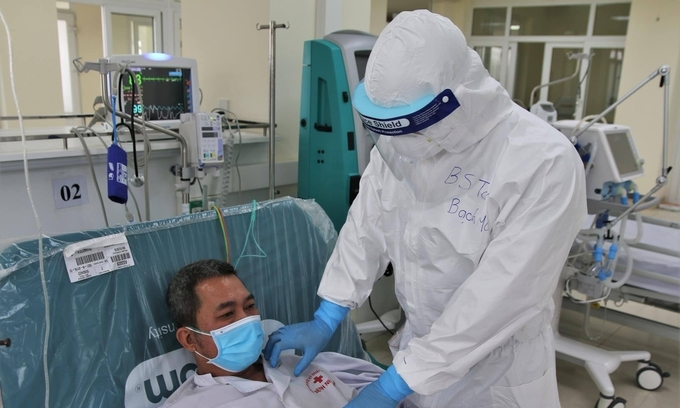 | Provinces and cities provide financial aid for Covid-19 hotspot Hai Duong Amidst the complicated development of the Covid-19 pandemic in Hai Duong, a number of provinces and cities such as Hanoi, Hai Phong and Bac Ninh ... |
Recommended
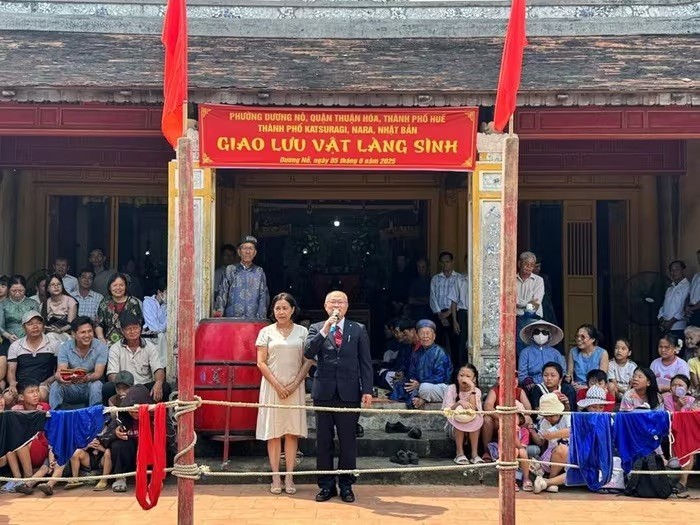 Viet's Home
Viet's Home
Traditional Martial Arts Exchange between Sinh village (Hue City) and Katsuragi City (Japan)
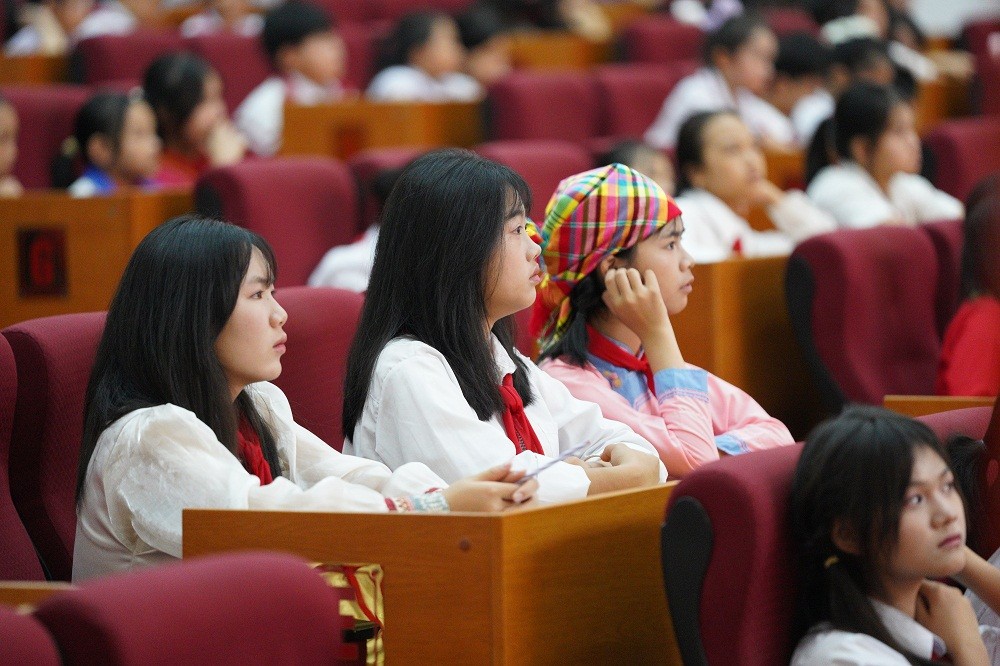 Viet's Home
Viet's Home
Lai Chau National Assembly, People's Council Delegates Hold Dialogue with Children
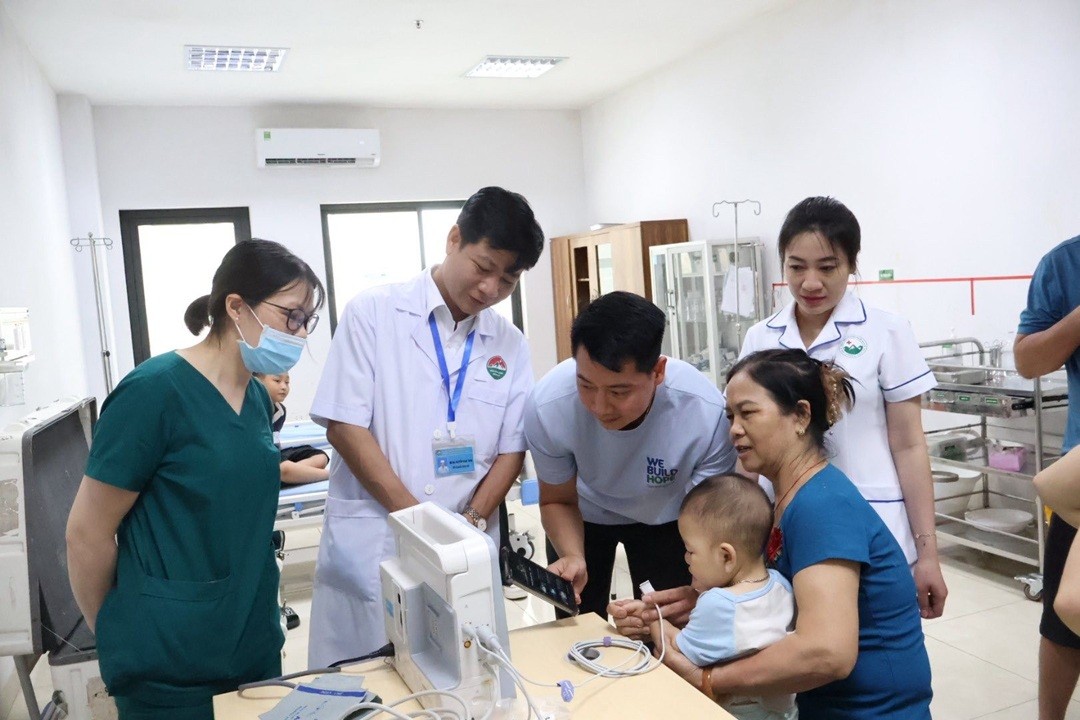 Viet's Home
Viet's Home
24 Children with Disabilities in Northern Provinces Received Free Surgery
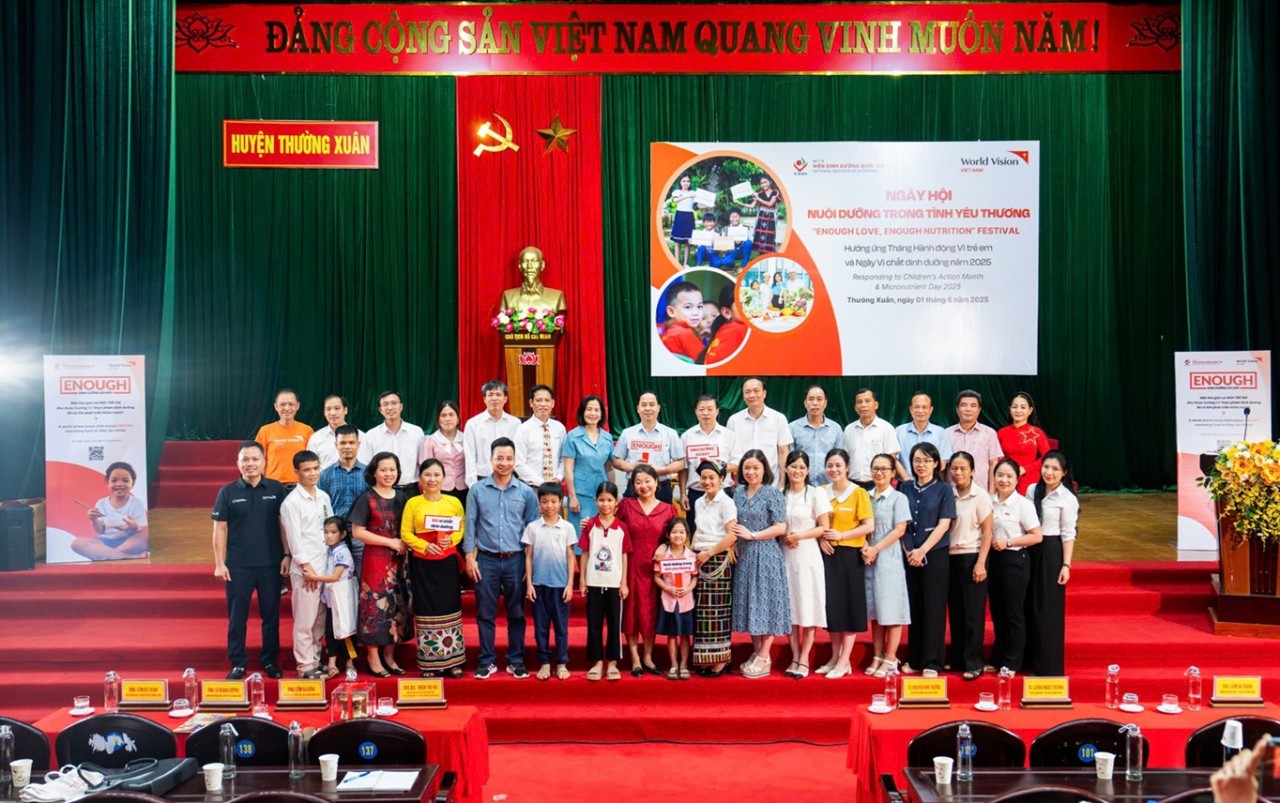 Viet's Home
Viet's Home
World Vision Promotes Comprehensive Nutritional Care for Vietnamese Children
 Viet's Home
Viet's Home
Hanoi, South Africa Strengthens People-to-people Exchanges, Expands Multi-sector Cooperation
 Viet's Home
Viet's Home
Hue City to Raise Awareness on Mine Accident Prevention
 Focus
Focus
Vietnam Leaves Imprints on the World Peacekeeping Map
 Viet's Home
Viet's Home

